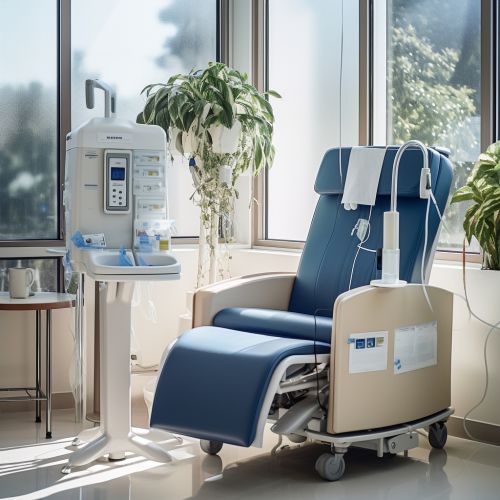Dialysis
Introduction
Dialysis is a medical procedure that performs the function of the kidneys when they are failing or have failed. It is a life-sustaining process that uses a specialized machine to filter harmful wastes, salt, and excess fluid from your blood. This restores the blood to a normal, healthy balance. Dialysis patients typically require treatment on a regular basis.


Types of Dialysis
There are two main types of dialysis: hemodialysis and peritoneal dialysis.
Hemodialysis
Hemodialysis is the most common type of dialysis. This process uses an artificial kidney, known as a hemodialyzer, to remove waste and chemicals from the blood.
Peritoneal Dialysis
Peritoneal dialysis, on the other hand, uses the lining of the abdomen, known as the peritoneal membrane, to filter blood. This type of dialysis is less common than hemodialysis but is gaining popularity as a viable alternative.
Dialysis Procedure
The dialysis procedure differs slightly depending on the type of dialysis.
Hemodialysis Procedure
In hemodialysis, the patient's blood is pumped through the blood compartment of a dialyzer, exposing it to a partially permeable membrane. The dialysate, or dialyzing fluid, is on the opposite side of the membrane.
Peritoneal Dialysis Procedure
In peritoneal dialysis, a sterile solution containing minerals and glucose is run through a tube into the peritoneal cavity. The peritoneal membrane acts as a partially permeable membrane, allowing the removal of unwanted substances from the blood.
Dialysis Complications
While dialysis is a life-saving treatment, it does come with potential complications. These can include infection, low blood pressure, muscle cramps, and peritonitis in the case of peritoneal dialysis.
Dialysis and Diet
Patients undergoing dialysis often need to adhere to a special diet to help manage their health. This typically involves limiting fluid intake and consuming a diet low in potassium, phosphorus, and sodium.
Conclusion
While dialysis is not a cure for kidney disease, it can help patients live longer and more active lives. However, it is a major lifestyle change and requires careful management.
